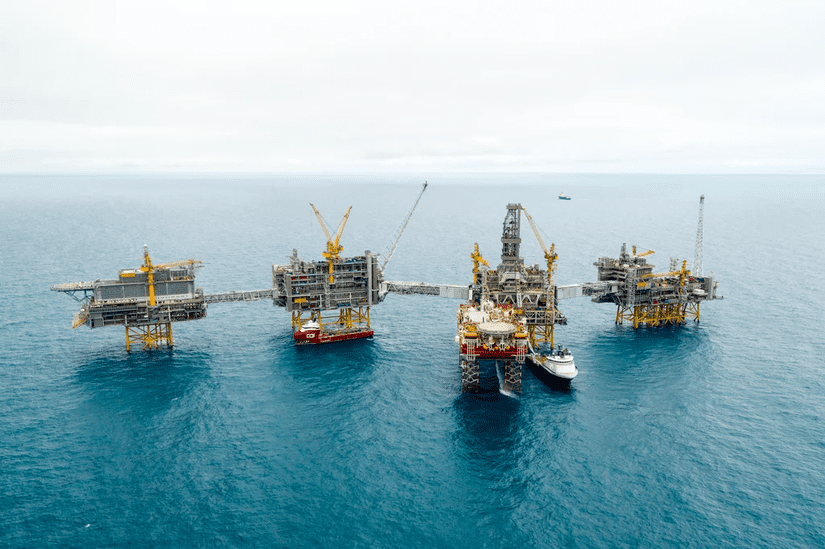Oil and gas exploration continues in Norway, through huge deals announced by the state, granting exploration companies 47 new licenses recently, as part of its interest in this vital sector.
Far Energy, a subsidiary of the Italian company Eni, has obtained 12 new exploration licenses in Norway, of which it will operate 5, reinforcing its position as a major independent energy company in the country.
The licenses – which came within the framework of bids for pre-determined areas for the year 2022 – were distributed to 3 main oil and gas provinces in the Norwegian continental shelf, according to what was stated in a press release issued by the company today, Thursday (January 12).
Far Energy had announced the discovery of huge amounts of natural gas, in what it described as “the largest discovery of the year” in the Goliath region in the Barents Sea off the coast of Norway.
As it indicated that preliminary estimates suggest the existence of reserves ranging between 57 million and 132 million barrels of recoverable oil equivalent, according to the information seen by the specialized energy platform.
Far Energy licenses
Far Energy has obtained 4 licenses in the North Sea, another 6 in the Norwegian Sea, and two in the Barents Sea.
The exploration and exploration licenses for oil and gas in Norway focus on Var Energy’s main hubs, but also include high-impact licenses in potential new hubs.
This underscores Far Energy’s strategy and commitment to exploring the Norwegian Continental Shelf, which is an essential part of the company’s future business growth, according to the statement.
Far Energy owns 148 licenses and 36 fields that produced 246,000 barrels per day of oil equivalent in 2021.
An important resource for Europe
In this context, Norwegian Oil and Energy Minister Terje Asland announced on Tuesday (January 10) the awarding of 47 new offshore oil and gas exploration licenses to 25 companies in the latest round of mature areas.
“Today’s tour is an important contribution to ensuring that Norway remains a safe and predictable supplier of oil and gas to Europe,” Asland said at an industry conference in southern Norway.
He stressed that the government remains committed to maintaining industrial activity on the Norwegian continental shelf, according to the Offshore Engineer platform.
The Norwegian Oil Directorate had expected an increase in oil production in the country by 6.9% in the current year (2023), while gas volumes are expected to remain unchanged near record levels at 122 billion cubic meters.
Oil and gas exploration licenses in Norway
The pre-determined area bidding round in Norway is licenses for oil and gas exploration in mature areas.
Each of the 47 drilling permits (29 in the North Sea, 16 in the Norwegian Sea and two in the Barents Sea) will have multiple owners.
In addition to Far Energy’s 12 licenses, Equinor was the largest single recipient with an interest in 26 of the licenses, and will be the operator in 18 of them.
The Norwegian oil company Aker BP has also won stakes in 17 licenses, of which it will operate 9.
Among other international players, Germany’s Wittnershall Dea has won stakes in 11 licenses and will be the operator of 3 of them.
Production at the Sverdrup field has been disrupted
In another context, the Johan Sverdrup oil field – the largest producer in the North Sea – suffered a partial interruption in production on Wednesday (January 11), after a power outage, according to a spokesman for the Norwegian company Equinor.
The company said the outage affected the second phase of Sverdrup, which has the capacity to pump about 185,000 barrels of oil per day, although it was not immediately clear how large the production cut would be.
The company spokesman stressed that the field will continue to produce from its basic facilities, which have a capacity of 535 thousand barrels per day.
He added, “We have some minor technical problems with one of the two energy suppliers from the shore to the Johan Sverdrup facilities… This does not affect the first-stage production, which is produced normally, but the second-stage production is currently idle,” according to the S&P platform. Global” (S&P Global).
The Sverdrup field, which in total can produce about 720,000 barrels per day of oil, gets its electricity via lines from the ground.
The facilities of the second phase – which became operational on December 15 and are expected to raise the total capacity to 720 thousand barrels per day – are subject to testing and commissioning works.
related topics..
Also read..

Leave a Reply